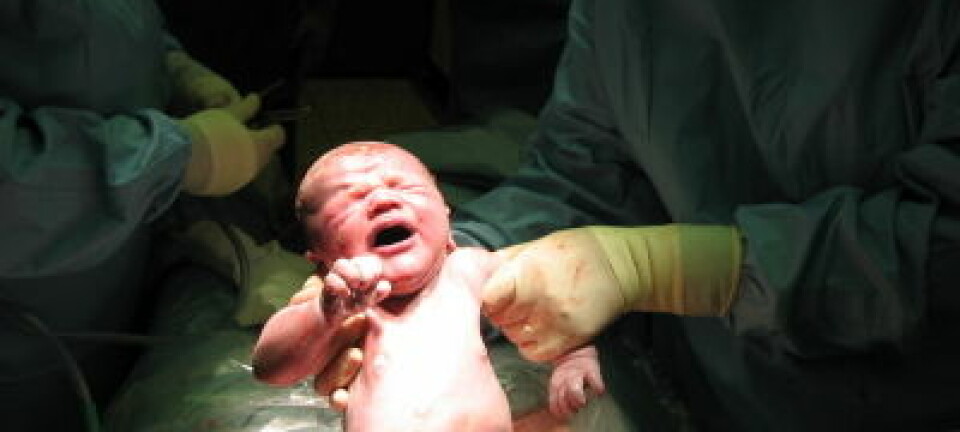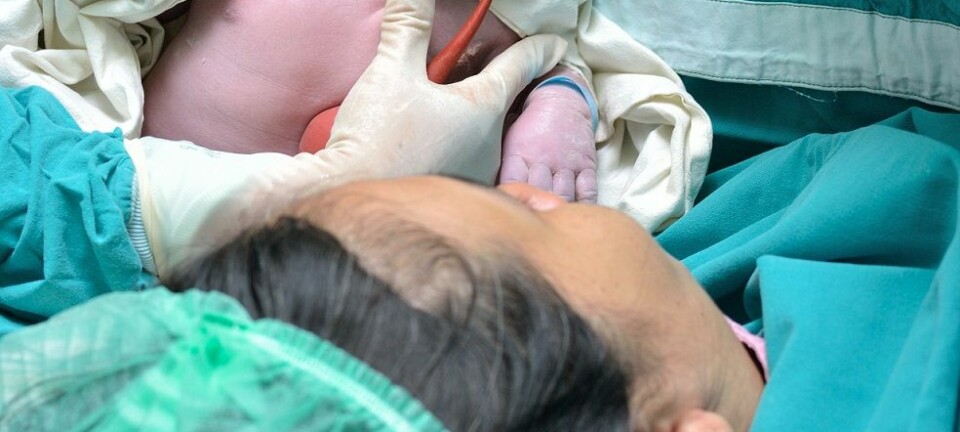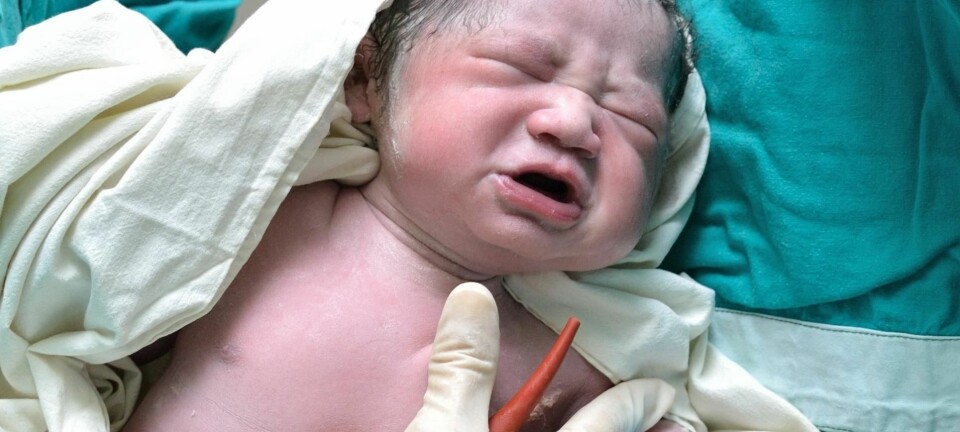
Preventing dangerous hypotension during C-sections
Eight out of ten women who elect caesarean delivery with spinal anaesthesia experience such a drop in blood pressure that it can endanger both mother and child. A recent study shows how to best prevent this.
Caesarean section (or C-section) with spinal anaesthesia allows a woman to experience the birth of her child while avoiding the risks of general anaesthesia.
In spinal anaesthesia, a syringe is inserted into the spinal cord, numbing the lower body while the patient remains conscious.
Unfortunately, a common occurrence during the spinal procedure for a planned C-section is that the woman's blood pressure falls.
A drop in blood pressure – or hypotension – may not only be uncomfortable for the mother and cause nausea, vomiting and cold sweat, but it can be dangerous too. In the worst-case scenario, serious and sustained hypotension can increase the risk of shock and bleeding from the womb.
Can hamper the baby’s breathing
If a woman’s blood pressure drops substantially and lasts for a long time, the baby may also be limp and have a hard time breathing right after birth, due to reduced blood supply to the placenta before the baby is born. This can cause the baby to have a lower Apgar score, which measures how a newborn is doing right after birth.
Despite the high risk of hypotension during a spinal, no fixed guidelines for treatment were in place when Jana Christine Kuhn began as an anaesthetist. She is now a specialist in anaesthesiology and a PhD candidate at Bærum Hospital.
"I wanted to contribute to acquiring more knowledge that could lead to better guidelines for stabilizing women during Caesarean deliveries," says Kuhn.
She set out to find the best preventive method to avoid blood pressure drops, and conducted a study that compared a medicinal approach with a mechanical method.
She recently won Vestre Viken's research award for the study, according to Dagens Medisin, a professional medical newspaper. The study was published in the journal Anesthesia & Analgesia last year and is part of her doctoral dissertation.
Advanced monitoring equipment used during the study also provided a better understanding of the mother's blood circulation during spinal anaesthesia in general.
Is leg compression as good as medicine?
Until 2005, no preventive method had shown a satisfactory effect against a drop in blood pressure.
Leg compression is a commonly used mechanical alternative that involves wrapping a bandage tightly around the woman’s legs. The goal is for the outer pressure of the bandage to help maintain the internal pressure in the blood vessels.
This has been a popular method for some hospitals in Scandinavia and around the world.
However, the method has not previously been compared with the medicine phenylephrine, which in recent years has established itself as the – purportedly – best medicine for preventing hypotension. The medication acts on the inside of the blood vessels by preventing them from expanding.
"Our goal was to determine if leg wrapping is as effective as phenylephrine," says Kuhn.
120 pregnant women in Bærum treated differently
Participants in the study included 120 pregnant women scheduled for caesarean deliveries at Bærum Hospital between 2010 and 2012.
They were randomly divided into three equal groups, each receiving different treatment.
The patients in one group had an elastic bandage wrapped tightly around their legs.
Group two participants were given the drug phenylephrine.
A third group served as a control group, and only received a saline placebo.
The conclusion was that phenylephrine is the most effective way to prevent a blood pressure drop in women receiving spinal anaesthesia for a C-section. The medication also helps the mother's heart to work more calmly than leg wrapping does.
Important for patients not to know
"It was exciting to participate in planning the study," said professor Leiv Arne Rosseland, one of the researchers behind the study and head of research in the Division of Emergencies and Critical Care at Oslo University Hospital.
It is especially important in blind studies like this that neither the patient nor the observers know what method is being used in each case, says the professor.
Blind studies should ensure that researchers compare active treatment with placebo effect. That's why the researchers camouflaged the treatment they actually gave to each individual as well as they could.
"A patient might be influenced unconsciously if she has more faith in one method than another," Rosseland says.
He thinks none of the patients guessed which treatment they had received.
Procedure is almost routine
According to Kuhn, the new findings will affect how doctors in hospitals prevent hypotension in caesarean deliveries on a daily basis.
Bærum Hospital has stopped leg compression since the study’s findings, and giving phenylephrine has now become their routine practice. Kuhn knows that several other hospitals in Norway have also adopted this practice.
But according to Rosseland, a number of hospitals are still not taking any measures to prevent hypotension in this group of women.
"We think it's better to be proactive when we have a drug that works so well," he says.
“We don’t have any overall idea how many Norwegian hospitals have made phenylephrine their standard practice so far. It always takes time for new treatment methods to be integrated into the guidelines, "says Kuhn.
Leg wrapping is better than nothing
Hypotension can be treated with medications, but it may take some time for the blood pressure to normalize and for mom to feel fine again.
"That’s why it’s much better to prevent hypotension in the first place," says Rosseland.
The study showed that the effect of leg compression was limited. Nevertheless, this method may be useful in other countries, Kuhn thinks.
"In areas of the world where you have no access to phenylephrine, it is absolutely recommended to use leg wrapping over doing nothing," says Kuhn.
-------------------------------------
Read the Norwegian version of this article at forskning.no


































